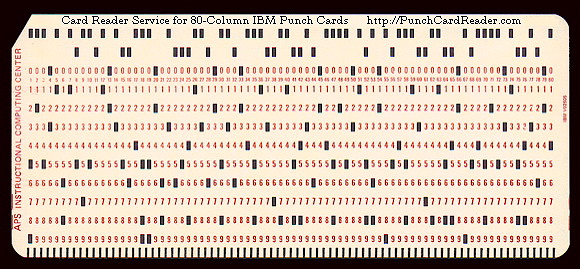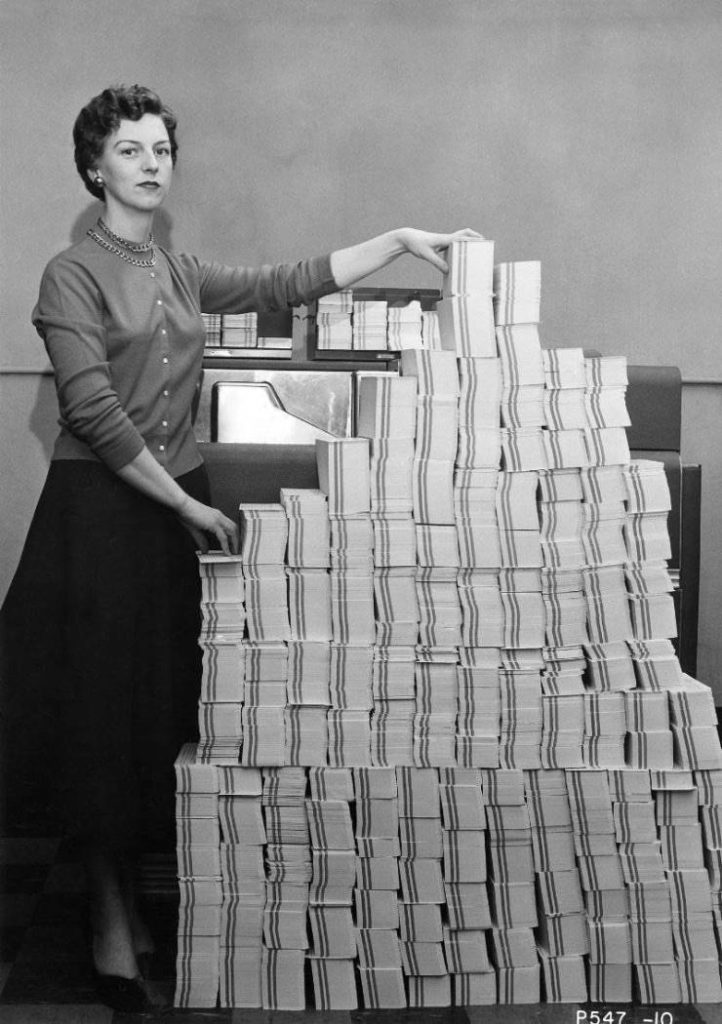Even in the early 70s, secondary magnetic memory was rather expensive. At the BU Academic Computing Center where I was a student operator and teaching assistant, disk packs held 5MB 10 disks on a single spindle.
You’d lock them down into a washing machine size device that actually spun it up and read the disks. Prohibitively expensive.
Paper cards organized in decks would lay in trays and we’d try to feed them through a card reader.
Too often, the grad students and professors wouldn’t listen to us when we told them they needed to replace a bunch of those cards (holding either code or data) as they were getting worn. The reader would, at some point, refuse to read them and we’d have to kick the job out and label the card as “dead.”
We were subjected to no small amount of abuse as we were told that WE were at fault and that WE had to re-punch it for them. No, that never happened and we had ways to let them know that we were not amused at the abuse; most “got” the message.
Looking at that number of cards, I could easily see it taking several hours IF all the cards were relatively new, the holes rather sharp, and the cards weren’t bent or falling apart.
The worst-case might be an entire day. I bet there are at least 50 trays worth of cards in that pic.
Now, we worked in a raised tile floor environment, and sometimes those tiles weren’t all that even – stubbing one’s toe(s) happened. Carrying two or three trays? Yup. Falling? Yup.
Were the cards numerically marked for ordering (outside of the actual code or data set by the punchouts)? Not generally. You get the picture with cards ALL OVER THE FLOOR.
And no, we weren’t responsible for being Humpty Dumpty’s “all the king’s men” job either.
And now, you can get a 6 Terabyte hard drive for $124 that fits in your hand.
(H/T: izismile)

